cult of the masculine moon: human sacrifice, and the only alternative.
trans vampires and pastoral werewolves.
Since I was a child, I have always hated horror movies, and viewed its fans with disgust. I thought something was wrong with me, because horror movies are popular and “normal.” Perhaps my hatred of horror was autistic and anti-social.
I noticed that my friends and peers enjoyed seeing films where adolescents were torn apart by elderly monsters. Ancient, wrinkled, decrepit old vampires, shuffling zombies, reanimated corpses, a ghoul or ghost that refuses to die… the consistent theme here is the forces of history returning to prey on the young.
I also had negative feelings toward the image of Christ on the cross as a brutal human sacrifice. While Christians claim the crucifix is an image of hope, signifying the end of such practices, it appears as a celebration of despair and pain. It would be like displaying porn in church and claiming that it was the “porn to end all porn.” I couldn’t understand why these cultural and religious displays of vampirism and human sacrifice persisted in a supposedly modern and “scientific” culture.
After years of pondering this question, I’ve come up with two metaphors to explain why human beings are fascinated with horror: the car wreck, and the cancellation.
car wrecks and cancellations.
In the case of a car wreck, everyone slows down to watch it. Humans cannot help but pay attention to horrifying things, even if it makes them feel bad. In the case of cancellation, or doxing, ripping apart someone’s life in an abstract sense (making fun of them, humiliating them, scrutinizing, bullying) can be more powerful than a car wreck in grabbing people’s attention. This is because people consistently rank social death as scarier than physical death.
If you lived in a primitive hunter-gatherer tribe, and you went off on a hunt or off to war, there’s a chance you would die. However, if you lived and succeeded, then not only would you benefit, but your entire genetic line would benefit. A successful hunt or successful battle would mean a better chance of survival for all your siblings, cousins, and children. But the worst that would happen is that you would fail and die as an individual, impaled by a wild boar or decapitated by a foreign tribe. Still, better to die trying than to not try at all.
By contrast, if you died “socially,” meaning you broke some social taboo and were exiled from the tribe, not only would it destroy your genetic lineage (exile was a death sentence), it would also harm all of your relatives and risk their own banishment. Whereas dying on a hunt or in a war would boost the social status of your relatives (as they would be remembered as the relatives of a hero), social death would negatively impact all of your genetic kinsmen.
This is why someone being doxed or cancelled on Twitter is much more attention-grabbing and engrossing than a picture or video of a car wreck. There are millions of videos of people fighting and beating each other up, but my own experience is that my attention is grabbed much more by watching someone’s life fall apart through social exposure than watching yet another video of a car crash.
Public human sacrifice, as ritually displayed in horror films, combines both physical carnage together with some sort of social dynamic, bringing together both forms of attention-grabbing in a perfect storm. In a horror film, the social element which ties everything together is the plot. A common motif is two teenagers who sneak off to have sex, and then the killer emerges from the shadows to stalk them.
The dynamic tension is centered on the issue of privacy and history. A divorce, a move, a nightmare, some past trauma is externalized and made apparent. Another common theme is the victim trying to plead their case in the court of public opinion. They seek out some authority, like the police, and try to explain their situation: “an ancient demon is haunting my house!” When the police or authorities reject or disbelieve their claim, it is a form of social rejection.
None of these dynamics were invented by Hollywood. Instead, they were invented thousands of years ago in farming cultures. Since human sacrifice was pervasive (found on all continents over a 4,000 year span) and costly (killing a person who could have otherwise reproduced or contributed to the labor pool), I assume that there was some kind of group-selective benefit to human sacrifice.
examples:
It is difficult to find large, civilized, agricultural societies which did not have some form of human sacrifice.
In the Iliad, Agamemnon plans to sacrifice Iphigeneia.
In the Apollonian festival of Thargelia, the Pharmakoi were chosen to be thrown off a cliff, beaten, or stoned to death. Their genitals were whipped. The Pharmakoi would either be the ugliest people in the village, or criminals.
Julius Caesar recorded that the Celts performed human sacrifices by trapping humans in a wicker man and burning them alive.
In 1389, the Teutonic Knight Marquard von Rachau was captured by Lithuanian pagans. They burnt him and his horse alive as a sacrifice to their Gods.
The burning of heretics and witches, which continued into the 17th century, could be described as a Christian form of human sacrifice to appease God.
The ritualized public beheadings of the French Revolution could be viewed as a secular form of human sacrifice.
The hangings and lynching of blacks in the South could also be seen as emulating earlier human sacrifice rituals.
Asians also performed human sacrifices. Chunghye of Goryeo (Korea, 1315-1344) was said to perform human sacrifices. In Japan, the practice was called Hitobashira, and in China, it was called Da sheng zhuang.
One of the remarkable aspects of human sacrifice is the tendency to sacrifice young women. In ancient China, for example, the skulls of 80 teenage girls were found buried in a sacrificial pit.
In 384 BC, Duke Xian of Qin ordered the first decree banning human sacrifice in China. Due to China’s turbulent history, human sacrifice was brought back several times by Mongol and Manchu rulers, until finally in 1673, it was permanently banned by the Kangxi Emperor.
While strong prohibitions against both animal and human sacrifice developed early on in mainstream Hinduism, the Hatimura Temple practiced human sacrifice up until the 19th century, and there have been reports of human sacrifice in India up until the present day.
The concept of Sati could be described as a voluntary human sacrifice. India passed additional laws against Sati in 1987. As recently as 2011, as many as 25,000 “bride burnings” were conducted in India and neighboring countries.
In Africa, as recently as 1989, General Butt Naked of Liberia claimed to have killed and eaten hundreds or even thousands of human sacrifices.
In the Luakini temples of Hawaii, human sacrifices were offered to Kūkaʻilimoku. In these temples, two sorts of sacrifices were made: (1.) Outcasts, war captives, or other low status males, (2.) Law breakers and political opponents.
In Mississippi, Chief Tattooed Serpent of the Natchez tribe died in 1725. His brother, two wives, a sister, his most trusted bodyguard, his doctor, his chief servant, his servant’s wife, his nurse, and his war club maker all took drugs and sacrificed themselves to be buried in his mound.
The Pawnee tribe of Nebraska and Kansas last conducted a human sacrifice of a 14 year old girl in 1838. This was called “the Morning Star Ritual.” It involved attacking an enemy village, kidnapping a young girl, and ritually cleansing her to take on her identity as an angel. When the day of the ceremony came, she was stripped naked, and flaming torches were used to burn her armpits and genitalia. Next, she was shot through the heart with an arrow, and smashed in the skull with a war club. Finally, the priest would cut her chest, and her blood would drip onto a piece of meat jerky. Then every single able-bodied male would shoot an arrow into her body. Finally, her body was left to decompose, face down, on the ground. The ritual was said to ensure the fertility of the soil.
Although Islam claims to prohibit human sacrifice, the concept of honor killing could be considered a form of human sacrifice where the victim is killed in order to restore the purity of the family’s honor.
The association of a young virgin with death and fertility is paralleled by the Greek myth of Persephone.
types:
With examples from these seven distinct cultures, we can describe a range of different kinds of human sacrifice.
Capital sacrifice: In capital sacrifice, the human sacrifice would be a criminal, defective, or disabled person. Modern day eugenics, based on the Holocaust, is often portrayed as a form of capital punishment or “purification” of society of its worst elements. Capital sacrifice is represented in the present day through the concept of vigilante justice, as in the film V for Vendetta, The Girl with the Dragon Tattoo, or the popular concept of hunting down pedophiles and torturing and killing them.
War sacrifice: In a war sacrifice, captives from another tribe would be killed ritualistically. This differs slightly from the capital sacrifice, in that it is not meant to purify society from within, but to demonstrate the superiority of the tribe over the external enemy. The Viking practice of the Blood Eagle could be described as a war sacrifice. Vlad the Impaler got his name from his display of human heads. The mafia practice of sending bits and pieces of a human body to relatives of the victim could be described as a war sacrifice.
Servant sacrifice: Like Christ offering himself up on the cross, a servant sacrifice is consensual and voluntary on the part of the victim, with the expectation of a spiritual reward or reunion with a master in the afterlife. Usually, this occurs during a funeral. It could be related to survivorship guilt which inspire suicidal feelings.
Beautiful sacrifice: The beautiful sacrifice is the one most related to the horror movie genre. In the beautiful sacrifice, a young woman or child is chosen to become a God, and is then sacrificed. In the Exorcist, the child is possessed by a demon. In slasher films, a teenage girl becomes the victim. The killer is usually wearing some kind of ritual mask, reminiscent of the frightening or intimidating masks of voodoo priests.
what’s the alternative?
Are all human societies inherently centered on human sacrifice, as suggested by Rene Girard? No. There is an alternative social form, known as pastoralism, in which human sacrifice is strongly prohibited. However, most religions and mythologies that we know of today are not purely pastoral or agricultural in origin. Rather, they are mixtures of the two, and this syncretism produces a dynamic tension.
Judaism, for example, began as the religion of pastoral nomads in the Anatolian plateau, who descended into the Levant and raided settled towns. The proto-Jews were similar to the Mongols, Indo-Europeans, and Berbers, and may have been partially descended from some of these populations, including the Hyksos of the Sea Peoples. Similarly, Muhammed was a pastoral raider whose armies swept over the dying and decaying Roman and Parthian Empires.
Eurasian pastoralist cultures share striking features:
Decentralized Property Rights: An unusual emphasis on social equality between nobles, rather than a centralized state under a single king. Think of the tension between the rule of judges and the rule of kings in the Bible. This could be referred to as a proto-feudal or proto-liberal conception of property, insofar as property was sovereignly held by lords, rather than held in common under a single despot (Pharaoh in Egypt, Ba’al in Syria, the Aztec Emperor, or the Chinese Emperor).
Monogamy and Concubinage: Polygamy in agriculturalist societies takes the form of the harem, where the upper class purchases multiple wives who are held as equals, and who each fight for the attention of their husband. By contrast, in pastoralist societies, monogamy was the official law, and women besides the wife were considered concubines. Think of the distinction between Sarah and Hagar.
Slavery rather than Sacrifice: When pastoralists raided agriculturalists, they would kill the men, or enslave them, and take the women as concubines. By contrast, when agriculturalist societies would conquer a neighboring tribe (Europe 3000 BC, Latin America 1400 AD), they would conduct human sacrifices as a demonstration of theocratic (political-religious) power.
No exclusively pastoralist society still exists today, and a majority of humanity derives its calories from farming rather than pastoralism. On the other hand, there is no society on Earth in which historical pastoralist domination is not evident: the Indo-European, Turkic, and Semitic languages were all initially forced on agricultural settlers by pastoralist masters. It is only in China, seemingly, that pastoralists were not able to impose their language on the Han, although centuries of Manchu domination make this a weak exception.
On its own, pastoralism is not a sufficiently scalable caloric source to be competitive with agricultural production. Pastoralism is like anarcho-capitalism. An anarcho-capitalist corporation (without nukes) could never outcompete the Soviet Union due to the sheer scale difference, despite an advantage in competence or efficiency. However, an anarcho-capitalist militia (also known as pirates or hackers) could theoretically raid the Soviet Union. If the Soviet Union was weak and decrepit enough, these anarcho-capitalists could seize control of the Kremlin, allowing them to assert the superiority of their culture, values, language, and religion over the obedient peasants.
These coups didn’t just occur once, but rather, pastoralists conquered agriculturalists in waves, successively, over hundreds of years. For example:
An agriculturalist society would be conquered by pastoralists.
These pastoralists would settle down, stop being pirates, and get lazy as administrators of huge collective farmers. They would lose their freedom of movement, their warrior spirit, and their love of adventure and exploration. After intermixing with the agriculturalists, they would lose their identity and assimilate into the agricultural way of life.
This agricultural society would then be conquered by pastoralists. Rinse and repeat.
vampires vs werewolves.
The vampire is an agricultural priest, while the werewolf is a pastoral warrior.
Twilight is about the battle between vampiric transgender human sacrifice cults and Indo-European wolf-cults. This is also the plot of Dragon Ball Z.
In the cult of Horror Theater, phobos doesn’t just mean fear, but also awe and reverence. Phobos refers to the fear of God. Fear, terror, awe, and reverence represent a heightened pitch of emotion induced by watching a human sacrifice. The more gruesome the act, the more horrified the masses. Horrification creates cowardice, submission, and obedience.
Human sacrifice is real, and seared into collective memory. For thousands of years, it was globally practiced. The only force which has ever opposed it is the Cult of the Masculine Moon.
how the moon got its gender.
In early farming societies, the phases of the Moon were coordinated with the phases of the planting and harvest season.1 Since the phases of the Moon correspond with female menstruation, farmers thought of the Moon as a feminine force.
However, not all ancient societies were centered on farming. For pastoralist cultures, the Moon represented an opportunity for conquest, associated with the howling of the wolf. People of the steppe, including the Turkic, Mongolian, and Indo-European tribes, all considered themselves to be morphologically or psycho-spiritually related to the wolf.
The lycanthropic origins of Rome are symbolized by Romulus and Remus. The pastoralist myth of humans raised by wolves was taken to an extreme by the Göktürks, who believed themselves to be descendants of human-animal hybrids from the ancestral wolf mother, Asena. In areas where the lion was dominant over the wolf, lions are associated with invading kings, as in the case of Judah and Herakles.
In farming societies, the Moon is associated with priestly or shamanistic witches, as in the goddess Hekate. In Eurasian Steppe cultures, the Moon is masculine and associated with the transformation of a man into a wolf. This transformation was aided by psychedelic substances meant to induce rage and fearlessness. For example, in the myth of Dr. Jekyll and Mr. Hyde, the substance which Dr. Jekyll drinks in order to become Mr. Hyde parallels the Vedic Soma.
Throughout the Rigveda, the gods consume Soma, which grants them strength, bravery, and courage. The name Soma in Sanskrit is associated with the moon. North Eurasian Warriors would intoxicate themselves with psychoactive concoctions during a full moon to prepare themselves for battle, becoming wolves.
witching vs hunting.
In Eurasian Steppe cultures, the night of a full moon is associated with the “wild hunt,” which is time for war. In farming cultures, the night of the full moon is associated with the “witching hour,” when priestesses would conduct human sacrifices.
In farming cultures, communal life was diurnally structured. Sunrise represented the beginning of the work day, while sunset represented the end of the work day. This is consistent with the diurnal behavioral patterns of other ape species.
Herbivore species such as deer, buffalo, cattle, and goats tend to be diurnal because the sunlight is advantageous for the identification of healthy plant matter. The color, shape, texture, size, and other visual markings of leaves, berries, grains, bark, and blades of grass are important for herbivores to avoid poisoning and to focus their efforts on nutritious consumption.
By contrast, predator species such as wolves are nocturnal. For predators2 the particular color, shape, texture, and size of their prey is not especially important. As a result, many predator species are nocturnal, because the subtle specificity provided by daylight is not necessary for these predator species to accurately identify sources of food.
There are very few species of cat large and dangerous enough to pose a threat to human beings. Lions do sometimes hunt at night, but more often, they hunt at dawn and dusk. The primary species which is predatory, and nocturnal, and poses a threat to human beings is the wolf.
The wolf hunts in a pack formation collectivistically, as opposed to other predator species such as the bear, which hunts individualistically. As a result, the wolf, with its special relationship to the Moon, is the perfect symbol of a predatory group of coordinated anarcho-capitalists who participate in night-time raids on agricultural settlements, who use psychoactive substances to transform themselves into fearless killing machines.
the gender of the moon.
In German, the gender of the moon is masculine. In Romance languages, the gender of the moon is feminine. Luna is a feminine goddess, whereas Chandra in Vedic mythology is a masculine God. In almost every Indo-European language with the exception of Sanskrit, the word for moon is derived from Mens, from which we derive the word menstruation. The term mens signified measurement, as in the passage of time, or the weighing of grain upon a scale at market.
The character of Luna within Roman mythology is derived from farming cults, whereas the wild Hunt of Odin, Rudra, Indra, Shiva, and the Maruts was illuminated by the full Moon. Warrior bands chose the night of a full Moon to strike their sleeping victims with the greatest visibility.
Whereas the feminine worship of the Moon is matriarchal, and reflective of the egalitarian collectivism of farming societies, the masculine worship of the Moon is patriarchal, and reflective of the hierarchical violence of warband societies. The archetype of the werewolf, which was once a God-like ancestor to steppe peoples, later became a demonized creature which haunts at the fringes of society.
The vampire is a masculinized derivation of an originally female cult. In Greek, the blood-sucking monsters and spirits, such as the Empusa, Mormo, Strix, and Lamia, were all descendants or servants of Hekate.
In the case of Lamia, the monster was said to first seduce men, then to eat his flesh. This ritual is depicted in The Bacchae by Euripides as a practice of a Maenadic, Dionysian cult — first they seduce and entice Pentheus, then they cannibalize him alive. For the Greeks, this scene violates multiple taboos: the killing of a son by his mother, incest, cannibalism, and the consumption of the flesh of a living creature.
One interpretation of this scene is that it is an inversion of primary taboos: the Greeks first established their taboos arbitrarily and axiomatically, and only later, they “inverted” them to imagine monsters. However, this leaves open the question of how and why these taboos were first established, since they are not universal. Some cultures, such as the Chinese, enjoy the eating of living flesh. Others practice cannibalism.
The Greek and Jewish taboo against the eating of living flesh and cannibalism may have developed in reaction to cultural competition from religions which sacralized these practices.
The Aztecs believed that the beating heart of the sacrificial victim was eaten directly by the Gods, but that other parts of the body could be divided up and eaten by the priest. It would not be unique, therefore, if a pre-Indo-European culture practiced both cannibalism and human sacrifice as depicted in The Bacchae.
Rather than assuming the Greek taboos were primary, and the monsters were secondary, we could instead imagine that the monsters were primary, and the taboos were a secondary opposition. The Hekatian monsters have several qualities in common: wings, nocturnality, femininity, blood-drinking, flesh eating, and sexual seduction.
The wings of the monster represent the feathery costumes and headdresses worn by the priestess. It is also possible that these priestesses were, like the Enarei, male by birth, but female according to ritual prescription. The ritual would occur at night, and it would begin with the seduction or sexual exploitation of the male victim. At the height of sexual excitement, the male would be cut apart, and his body would be consumed (as carried on in the Christian tradition of communion) while his heart was still beating.
The point of such a ritual was to shock and psychologically bind together both the participants, as well as the crowd. It induced a form of mass frenzy and trauma in order to sacralize the priesthood and to place it above the masses.
By contrast, the ultimate Indo-European ritual was the consumption of Soma on a full Moon in preparation for a coordinated attack on an agricultural settlement. The contrast between the two cultures can be viewed from a number of perspectives:
The Indo-European attack involves disrupting an existing social order from the top-down, while the agricultural vampiric ritual involves sacrificing a member of society from within in order to further entrench the existing social hierarchy.
The Indo-European attack demands masculine virtues like bravery, self-sacrifice, and fearlessness, while the agricultural vampiric ritual is intended to inspire fear, terror, and hysteria in both the participants and the audience.
The Indo-European attack carries with it risk and danger. It involves a small band of warriors attempting to take a much larger settlement by surprise. The vampiric ritual is pre-planned, staged, and involves the victimization of an individual at the hands of a collective.
the pastoral alchemist.
Mr. Hyde and Frankenstein’s monster are demonized alongside vampires and werewolves, and it is difficult at first glance to disentangle this mess of monsters. and These fearsome forms are derived from earlier Gods, which are themselves representations of the transformation of men into their highest forms. The priest aspires to be the vampire, sucking the blood of others, while the warrior aspires to be the werewolf, who unleashes physical power. Childish intuition can provide the initial instinct necessary, which is then refined with a rational mythological account of opposing origins.
In order to produce the Soma necessary to induce the werewolf-mode, the chief priests of pastoral cultures were alchemists, also known as shamans.
The alchemist (or scientist) is represented by Prometheus, Daedalus, Dr. Faustus, Dr. Jekyll, and Dr. Frankenstein. Science, in mythological terms, is not mere tinkering or engineering, but exploration and discovery. It is piercing the veil and escaping beyond the dogma of tradition. Whereas agriculture is historicist, and attempts to adhere to a fixed ideal, science pursues open spaces, new vistas, and conducts raids on old ideas.
the vampiric ideal:
The ideal vampiric scene is a draconic queenly pageant with the human sacrifice of a youth at its center.
Silence of the Lambs, in depicting the victim of Buffalo Bill as trapped in a hole, waiting to be flayed alive so the female skin can be worn, is a recollection of deep traditional forms, where male priests would wear the cannibalized remains of beautiful women.
The God of science, by contrast to these horrific nightmares, is not to be feared, but to be embraced, embodied, and incarnated. Rather than sado-masochistic voyeurism (now enjoyed in 1080p), the hunter is in pursuit, an invader, an explorer, a discoverer, and a conqueror.
conclusion.
It is possible both mythologically and etymologically to trace the divergent symbolism of the Moon to these two separate cultures. The first aristocracies were constructed from pastoralist traditions, which superimposed themselves upon agricultural societies.
The syncretism of these two cultures created competing symbolic regimes. The concept of the Man in the Moon signals a masculine orientation, while the witch’s Moon signals a feminine agricultural orientation.
Those who love horror movies descend, psychologically, from the slaves and priestesses of agricultural cults, while libertarians who love Dragon Ball Z descend, psychologically, from the proto-feudalists (or proto-liberals) of the pastoralist steppe.
Since all modern cultures and all modern humans are a product of the interaction between pastoralism and agriculturalism, this descent is not purely biological, but also spiritual in nature. By recognizing and exploring this division, the simple enjoyment of a horror movie can be seen as a deeply religious act, with the darkest civilizational consequences.
Ask yourself: would John Galt watch horror movies? King David? King Arthur?
In future essays, I may explore the implicit theology of HP Lovecraft, the avowed racist and white supremacist, whose love of horror paradoxically derived from the ancient agricultural cults he claimed to hate (as opposed to the nomadic-piratical Vikings he claimed to love).3
If you’d like to read more about this subject, please consider becoming a paid subscriber. As always, every like, comment, and re-stack is appreciated, as your support is what keeps this publication alive.
With the exception of certain poisonous species of frog.
Some discussion of that here:
horrorfilmaesthetics.blogspot.com/2010/07/horror-is-theistic-or-nihilist-and-anti.html






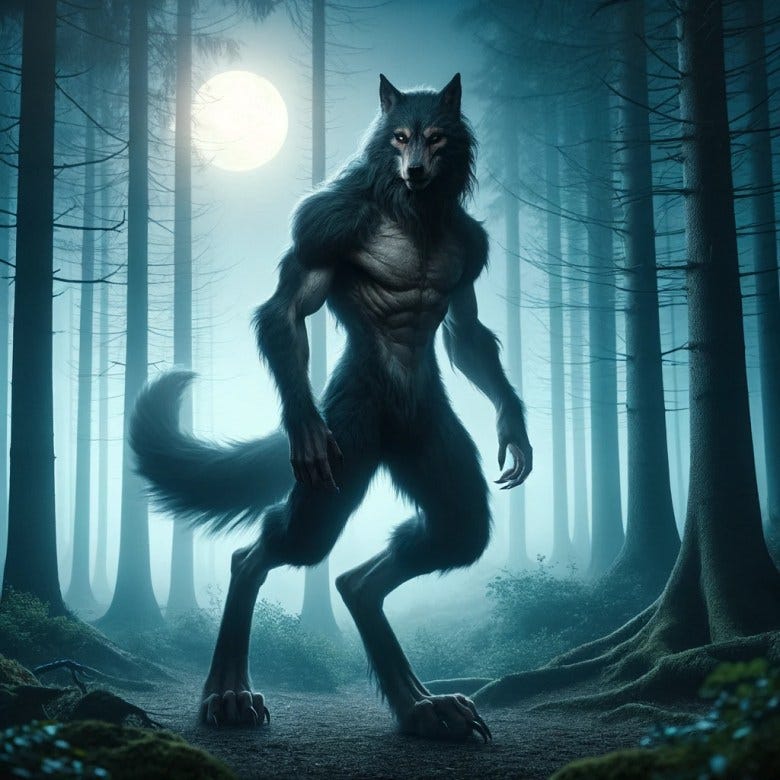
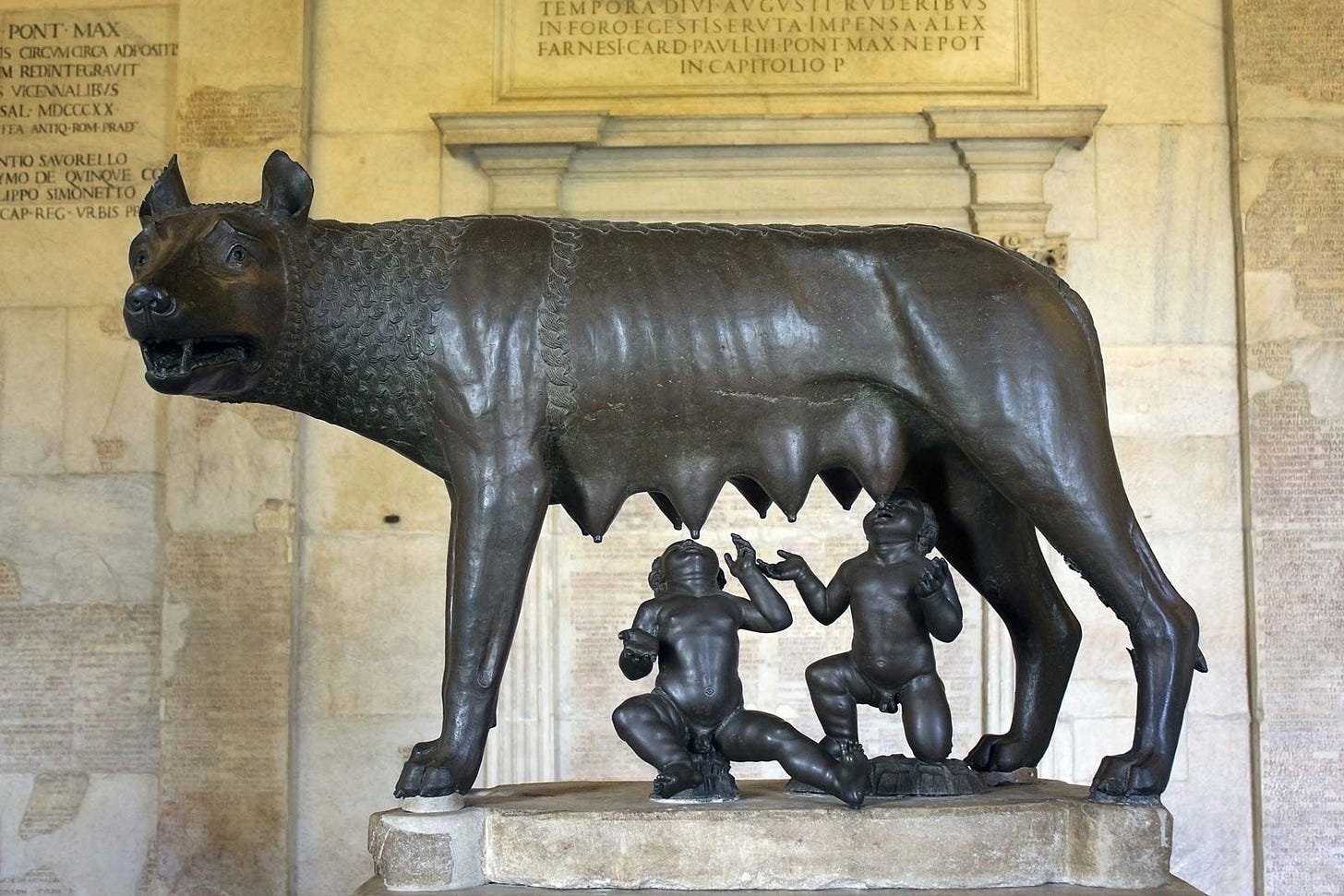
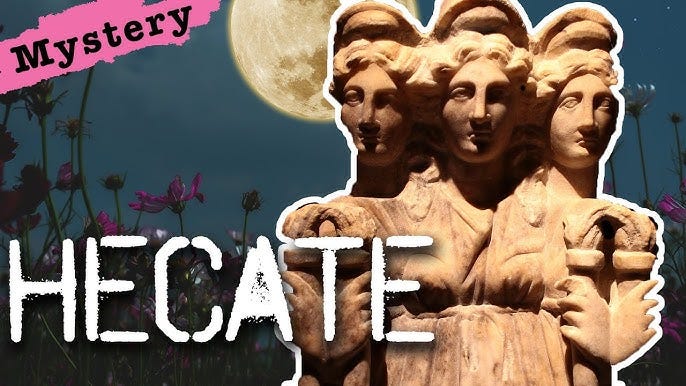

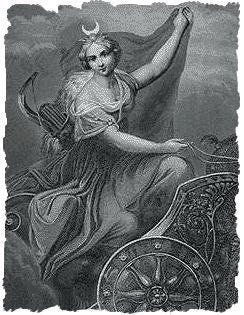

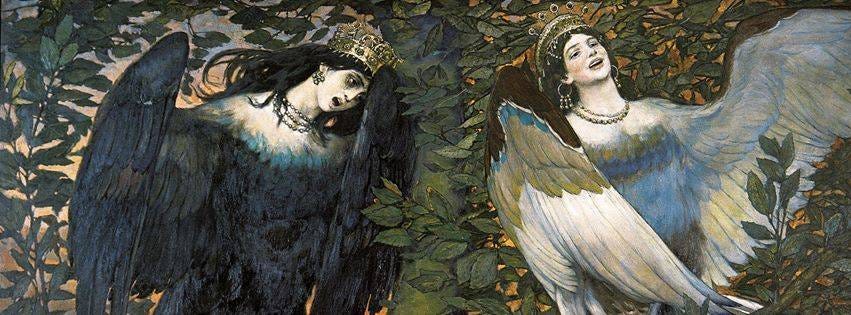

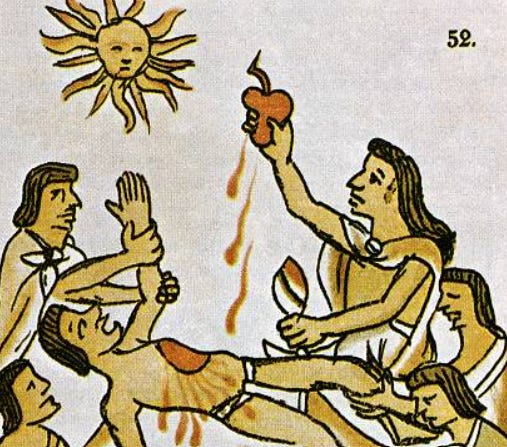

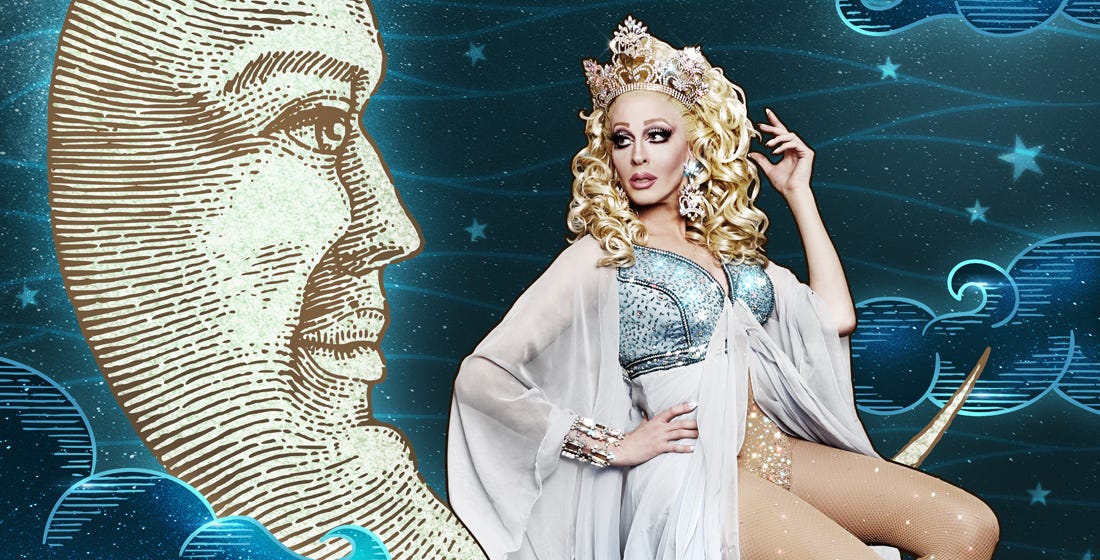
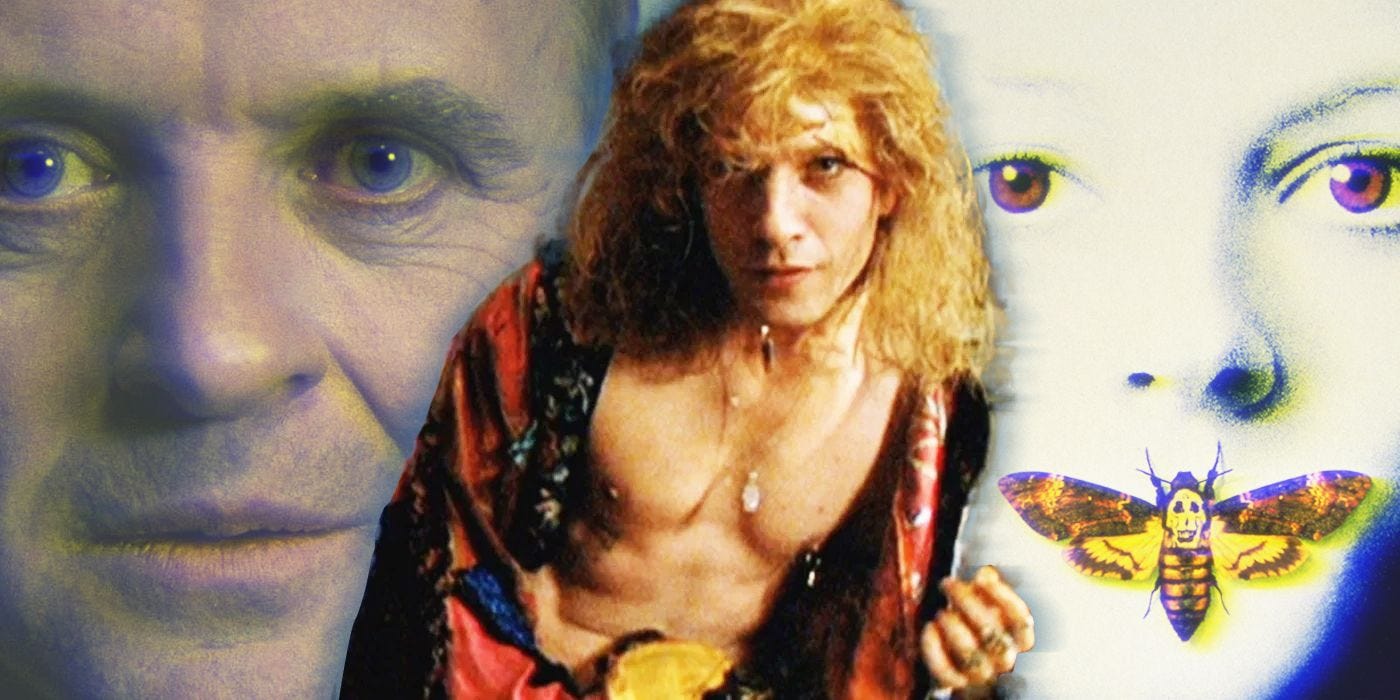
It's over, I already portrayed myself as the anarcho-capitalist pirate werwolf shaman and you as the transgender vampiric homosexual priest
Wow, this one was really thought-provoking. I had always wondered why it was der Mond, die Sonne when I have always considered moon=feminine and sun=masculine in the hermetic tradition. Does this imply that hermetic philosophy (and any systematic philosophy for that matter) emerges primarily from agrarian rather than steppe societies? Maybe nomads have no time to set down complex philosophical systems?
A new idea for me is the notion that we might regard people in the steppe culture as "good guys" for moving us away from sacrificing a member of the community. I had previously thought of them as "bad guys" for raiding villages. I had also been suspicious of pastoralists after reading what Robert Sapolsky wrote about pastoralism as the basis for the culture of honor in the southern United States, given that the culture of honor leads to violent responses to perceived insults. I guess there are positives and negatives in any culture.
Thanks so much for the thought-provoking post. I am going to share it with a colleague who is an expert on the psychology of horror media.